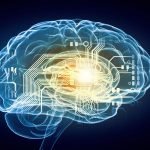The Power of the Breath: Stimulating Immunity with Breathing, Meditation, & Cold Hydrotherapy
Sarah King, ND
“Nature is our teacher,” said well by Wim Hof during his 2010 TED talk in Amsterdam. Also known as the “Iceman,” Hof is an adventurer and world record-holder from the Netherlands, most notably known for running a marathon above the polar circle wearing only shorts. His other incredible endeavors include breath-holding for 6 minutes while submerged in cold water under a sheet of ice, and holding the world record for the longest ice bath. Hof isn’t an outlier or a superhuman but perhaps a water-cure teacher of the 21st century.
With a compulsion to jump into freezing cold water, Hof decided to take back the power of the mind and the body. He intuitively knew that he could mentally override the shock response of his body to cold water exposure. He later developed a breathing technique, studied for the first time in 2012, that allows for more efficient gas exchange in the lungs. He combines this technique with Tummo – an active form of meditation designed to withstand nature’s cold elements – and has been teaching these techniques to anyone who wants to learn.
After accomplishing these incredible feats, which many believed to be impossible, Hof sought out a few experts to study him. He felt it important to scientifically show the effect that using this method had on his metabolism and his immune system. He teamed up with Professor Mattjus Kox, PhD, and later with Prof Peter Pickkers, PhD, at the Radboud University Medical Center in the Netherlands, who monitored the parameters that Hof could influence using his breathing and meditation method. Ultimately, through measurements of epinephrine, norepinephrine, as well as a profile of pro- and anti-inflammatory cytokines, they found Hof could indeed control his autonomic nervous system (ANS) and influence the innate immune system. Hof’s physiological responses to different stimuli were then studied against healthy male subjects that were trained in the Wim Hof Method, as well as a group of healthy males that were not.
Hydrotherapy can be very influential in healthcare, but we are now beginning to understand the physiology of this controlled, non-shivering thermoregulation. As well, we are looking at its ability, in combination with other stimuli, to initiate an immune response. Though Hof’s method has been shown to increase physical stamina, the implications in other areas of healthcare, such as autoimmune diseases, are promising.
Training with the Breath: Relaxed vs Active
Many of us in the Western world associate meditation with a relaxation activity; however, there are several forms of Buddhist meditation that elicit different responses, not just calming of the central nervous system (CNS). The Buddhists’ Theraveda practice of Shamatha (or Samatha), which brings the individual into a very relaxed state, is very common in North America and is used to help ease anxiety, calm the CNS, and assist in stress reduction.1 It follows a mindfulness-based practice, slowing down and concentrating on the breath or on a visualization. However, other forms of meditation, such as Vajrayana, are meant to do quite the opposite, which Hof uses to his advantage. Central to Tibetan Buddhism, Tummo, a form of Vajrayana meditation, is used to train “self-existing wakefulness.”1
Vajrayana is used to induce arousal, awaken the mind, and allow an increased capacity to respond to stimuli.1 Studies on this arousal-inducing form of meditation have shown it to stimulate the sympathetic nervous system (SNS), increase levels of norepinephrine, and increase core body temperature.1,2 This might be 1 explanation for how Hof was able to maintain a core body temperature of 37°C while sitting in ice water for 1 hour and 52 minutes.3 He claimed, “It’s all in the breath.”
Shallow breathing is common in our Western society. Our respiratory rate and breathing is generally controlled by the ANS, and perhaps we don’t give it enough attention because we know our bodies will always keep breathing for us. But many forget that we actually have full control over our breath. The neuronal networks of the medulla control the rhythm of our breathing, like an auto-pilot, but we also have voluntary control whenever we want it. Although we can pilot our own breathing, our CNS still has chemoreceptors that are strategically located to detect changes in blood pH and oxygen saturation. For example, try slow, deep breathing while running. Depending on your skill level, it can be maintained for a short while, but the body knows when it’s not getting enough oxygen and will try to push you out of the pilot’s seat to increase your respiration rate.
Hof realized that the key to withstanding challenging environments or to increase physical performance lay in the ability to alter his physiology via epinephrine (adrenaline) and oxygen levels. In one clinical experiment, he was able to increase his blood pH level through breathing.4 His technique involves taking in more air than you are releasing. It’s a form of controlled hyperventilation followed by a recovery breath, and holding at the exhale. Blood O2 is increased, CO2 is decreased, and although this often induces light-headedness and a tingling sensation in the body, Hof has demonstrated that it can increase physical performance by providing more oxygen for ATP (energy) production.4
The theory involves using the largest alveolar surface area in the lungs as possible. Allow for the most amount of gas exchange to influence the ratio of O2 and CO2. Physical stamina is increased by prolonging aerobic respiration processes and delaying the need for anaerobic respiration.
Effects on Cortisol & Immune function
Acute stress activates endocrine pathways that assist in our ability to adapt to environmental stimuli.5 The hypothalamus-pituitary-adrenal (HPA) axis will induce cortisol release from the adrenal glands in the presence of a stressor, which supports many functions in cardiovascular, metabolic, and immunologic control.5 During an acute stress response, increased cortisol induces the “fight-or-flight” response and increases energy production for vital organ systems.
Hof’s cortisol levels were studied as he practiced Tummo meditation in the presence of 2 different stressors: ice immersion and an injection of bacterial endotoxin (lipopolysaccharide, or LPS). In the first experiment, Hof’s response to ice immersion was measured as he used his method of breathing. They found that his cortisol levels increased upon ice immersion, and then fell back to baseline after he was removed from the ice.6 In the second part of this case study, Hof employed his same method to increase the release of epinephrine before the endotoxin injection. He experienced only mild symptoms (a mild headache of 10 minutes’ duration), which were compared against a historical cohort of 112 healthy males who underwent the same endotoxin protocol.6 All control subjects except 1 experienced headaches, shivering, fever, and increased levels of proinflammatory cytokines.3,6
As a follow-up to this experiment, Prof Kox and Prof Pickkers from Radboud had Hof train healthy male subjects in his technique to undergo the same experiment, and they investigated the effects on the innate immune system, as well as its ability to be reproduced. Training included 4 days of intensive instruction and practice under Hof’s supervision, and 5 to 9 additional days of at-home practice in all 3: meditation, exposure to cold, and breathing techniques.
During the endotoxin challenge, all subjects had similar baseline cortisol levels, which were found to be raised in both groups 2 hours post-injection.7 After using their breathing techniques, however, trained subjects had significantly lower cortisol levels 3 to 8 hours post-injection, compared to controls.7
Immune function parameters were also studied, and leukocyte concentrations were found to be significantly higher in trained subjects, beginning 30 minutes after breathing exercises were initiated.7 Proinflammatory markers (tumor necrosis factor-alpha [TNF-a], interleukin [IL]-6, and IL-8), as well as the anti-inflammatory cytokine, IL-10, were increased in both groups after endotoxin administration. What’s interesting, though, is that the proinflammatory cytokines were significantly attenuated in trained subjects.7 Test subjects using the Wim Hof Method also had IL-10 levels that were 194% higher than control subjects.7 Not only did test subjects have an early induction of IL-10 compared to controls, but they also experienced fewer flu-like symptoms.7
This type of symptomatic control when exposed to an endotoxin is likely due to the immunoregulatory effects of IL-10 and its ability to inhibit TNF-a activation from LPS. It is likely that the elevated epinephrine levels in the trained group, as a result of Hof’s breathing technique – practiced before and during LPS administration – is responsible for this response.
Knowing the principles and applications of hydrotherapy, it’s no surprise, the effect that cold can have on immune function. We use ice and cold compression for swelling and inflammation on a regular basis. We also know that cold hydrotherapy can help improve immune function by increasing serum leukocyte levels.8,9 But when paired with breathing and active concentration techniques, we are now influencing additional factors that control immune function.
Cold Hydrotherapy on Thermogenesis & Immunity
This mind-body connection studied in the Netherlands was based on the combination of meditation, breathing, and cold exposure. Controlled activation of the ANS seems to greatly affect immune function during human endotoxemia, but cold exposure is key in regulating the same stress response that is responsible for immune system- and metabolic control.5,9
In contrast to previous studies, recent studies have shown that brown adipose tissue (BAT) can be found not only in infants and children, but also in healthy adults.10,11 BAT plays a key role in elevating body temperature during fever, but also in homeostatic control during cold exposure.10,12 These studies from the Netherlands demonstrated that subjects trained to use this mind-body connection could have symptomatic control over their response to an external stimulus, and the same can be said for the response to cold exposure.
Normal exposure to cold for long periods begins with the body shunting blood to vital organ systems. Skin becomes cold, and sensation is lost as the body tries to keep the core warm. Eventually, tissue becomes necrotic and hypothermia sets in. However, if you can control the body’s response to cold, you can withstand its elements and employ the benefits it has to offer. Altering the effect of cold to induce non-shivering thermoregulation is the key.
When we think of the role fever plays in an immune response, BAT thermogenesis is essential in facilitating this increase in core temperature, and therefore also plays a role in the response to endotoxin. Researchers have found that inhibition of BAT thermogenesis results in increased bacterial LPS in sepsis and endotoxic shock.10 In fact, both stimuli that were studied by Prof Kox and Prof Pickkers – endotoxin and cold exposure – have been shown to activate BAT to help increase core body temperature.10,12 Interestingly, BAT thermogenesis requires a good supply of oxygen and glucose, as its cells are dense with mitochondria.9 This further demonstrates the importance of breath work and oxygen saturation, though in the absence of hypoglycemia.
Applications to Healthcare & Autoimmune Disease
Although Hof’s method has been shown to improve physical performance through more efficient energy production and oxygen utilization,4 there are also impressive implications for its use in healthcare. Excessive and prolonged inflammation can ultimately cause tissue damage. It’s 1 reason that corticosteroids are prescribed for controlling inflammation, especially in autoimmune diseases – to suppress proinflammatory cytokine production.5 By training to control immune function, this method may be able to suppress an overactive immune system.
Conclusions
Further studies will be needed, but the implications are promising. Until then, we will continue to see the positive effects that active breathing and meditation can have on cellular energy. In combining these with cold hydrotherapy, even with something as simple as daily cold showers, not only will there be a pronounced immune response, but better recovery from cortisol secretion in response to stressors.
This may be the scientific backing to a 21st-century water-curist/nature-curist approach that has never been conducted in detail before. By training the breath, increasing oxygen, providing efficient ATP energy production, and using the power of active concentration, we can ultimately train our bodies to better tolerate cold hydrotherapy treatments and retain their benefits. What bonds us with Wim Hof, however, is our mutual encouragement to learn from and utilize the power of nature and to set forth a commitment to the mind-body connection.
 Dr. Sarah King is a licensed Naturopathic Doctor, graduating from the Canadian College of Naturopathic Medicine in 2014. Prior to completing her medical studies, she attended Nipissing University where she received her Honors Bachelor of Science in Biology. Sarah has a passion for women’s health and is a birth doula in Durham and Toronto Region. She treats a wide variety of health conditions including menstrual disorders and hormone balancing, fertility, prenatal care, digestive concerns, skincare and mental health/anxiety. Outside the office Sarah is an avid runner with a love of the GTA’s best forest trails. She also continues to improve her yoga practice and teaches breath work as part of stress management counselling to her patients.h.
Dr. Sarah King is a licensed Naturopathic Doctor, graduating from the Canadian College of Naturopathic Medicine in 2014. Prior to completing her medical studies, she attended Nipissing University where she received her Honors Bachelor of Science in Biology. Sarah has a passion for women’s health and is a birth doula in Durham and Toronto Region. She treats a wide variety of health conditions including menstrual disorders and hormone balancing, fertility, prenatal care, digestive concerns, skincare and mental health/anxiety. Outside the office Sarah is an avid runner with a love of the GTA’s best forest trails. She also continues to improve her yoga practice and teaches breath work as part of stress management counselling to her patients.h.
References
- Amihai I, Kozhevnikov M. Arousal vs. relaxation: a comparison of the neurophysiological and cognitive correlates of Vajrayana and Theravada meditative practices. PLoS One. 2014;9(7):e102990.
- Kozhevnikov M, Elliott J, Shephard J, Gramann K. Neurocognitive and somatic components of temperature increases during g-Tummo meditation: legend and reality. (2013) PLoS One. 2013;8(3):1-12.
- Houtman AM, Scudellari M, Malone C, Singh-Cundy A. Biology Now. New York, NY: WW Norton & Company; 2015; Ch 22: 389-405.
- Hof I. Innerfire: Wim Hof Method Explanation. [eBook] June 2015. Available at: www.icemanwimhof.com/files/WimHofMethod-revealed-2015.pdf. Accessed January 20, 2016.
- Lee do Y, Kim E, Choi MH. Technical and clinical aspects of cortisol as a biochemical marker of chronic stress. BMB Rep. 2015;48(4):209-216.
- Kox M, Stoffels M, Smeekens SP, et al. The influence of concentration/meditation on autonomic nervous system activity and the innate immune response: a case study. Psychosom Med. 2012;74(5):489-494.
- Kox M, van Eijk LT, Zwaag J, et al. Voluntary activation of the sympathetic nervous system and attenuation of the innate immune response in humans. Proc Natl Acad Sci U S A. 2014;111(20):7379-7384.
- Janský L, Pospísilová D, Honzová S, et al. Immune system of cold-exposed and cold-adapted humans. Eur J Appl Physiol Occup Physiol. 1996;72(5-6):445-450.
- Goedsche K, Förster M, Kroegel C, Uhlemann C. Repeated cold stimulations (hydrotherapy according to Kneipp) in patients with COPD. Forschende Komplement. 2007;14(3):158-166. [Article in German]
- Morrison SF, Madden CJ. Central nervous system regulation of brown adipose tissue. Compr Physiol. 2014;4(4):1677-1713.
- Virtanen KA, Lidell ME, Orava J, et al. Functional brown adipose tissue in healthy adults. N Engl J Med. 2009;360(15):1518-1525.
- van Marken Lichtenberg WD, van Hommerig JW, Smulders NM, et al. Cold-activated brown adipose tissue in healthy men. N Engl J Med. 2009;360(15):1500-1508.










